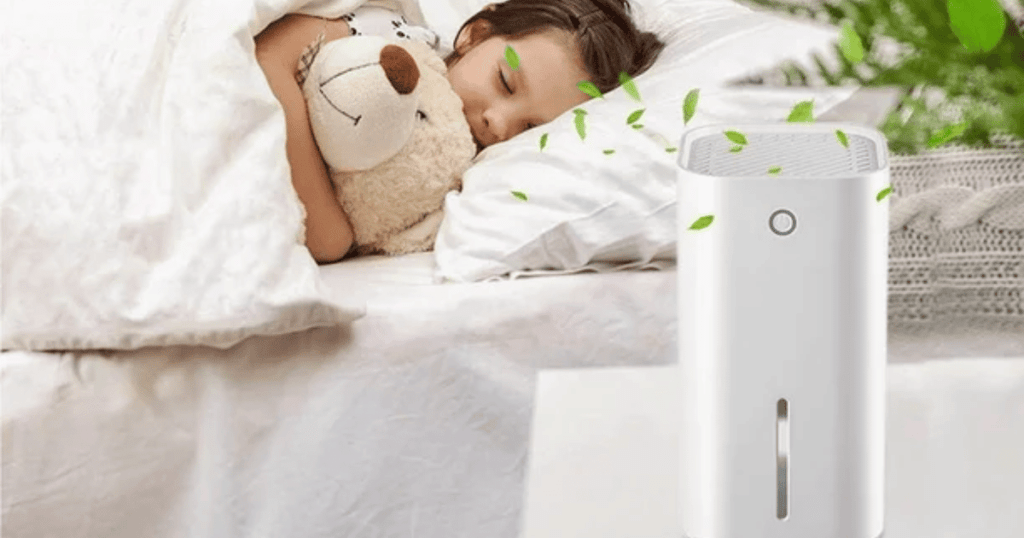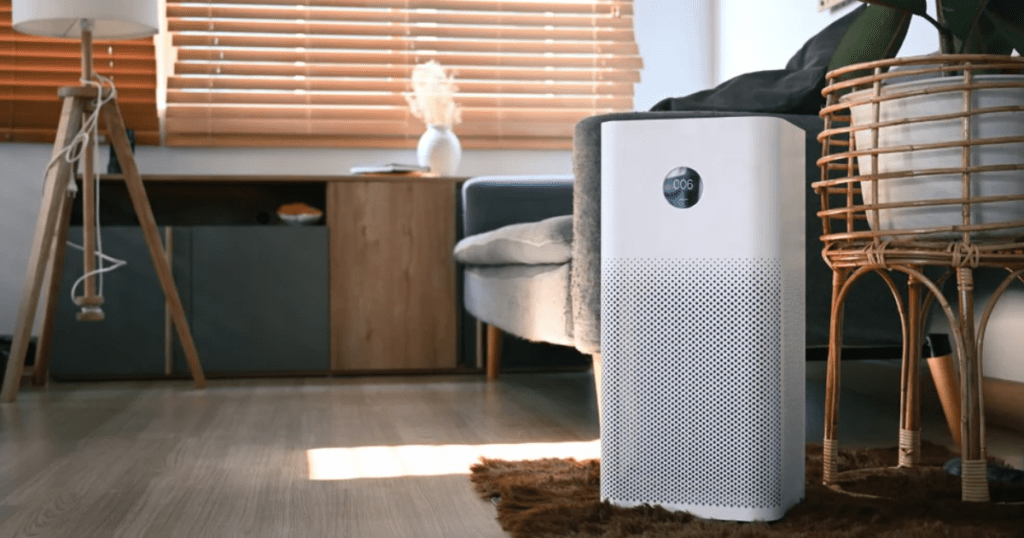
Do you ever step into a room that feels kind of like a sauna, thick with moisture and clinging to your skin? Perhaps you wake up with a stuffy nose and itchy eyes, blaming it on allergies, but the real culprit might be lurking right there – humidity. High humidity levels (above 50%) increase the risk of asthma attacks by 35-50%. While a healthy dose of moisture in the air is essential, excess humidity can wreak havoc on your comfort, health, and even your home’s structure.
This problem can be solved easily with the help of a dehumidifier. What do dehumidifiers do? These small devices are like miniature vacuum cleaners, silently sucking out excess water vapor from the air, leaving you with a cool, refreshing haven. But how do dehumidifiers work? What are the different types, and how can they benefit you? Buckle up, because we’re about to introduce you to the world of dehumidifiers and unlock the secrets to a healthier, happier you!
Table of Contents
How do Dehumidifiers Work?
Think of a dehumidifier as having two main parts:
- The Moisture Magnet: This is usually a cooled coil or a desiccant wheel. Imagine the cooled coil like a cold surface on a rainy day – water vapor condenses on it, leaving the air drier. Desiccant wheels, on the other hand, use a special material that attracts and holds onto moisture like a sponge. You can call them desiccant dehumidifiers.
- The Air Mover: A fan pulls in the humid air from the room. This air passes over the moisture magnet, where the excess moisture gets trapped.
- The Dry Air Release: The now drier air is then warmed (optional) and released back into the room, creating a more comfortable and healthy environment.
Think of it like this:
- Open the windows – this is like the fan pulling in air.
- Place a bowl of ice outside – this is like the cooled coil, attracting moisture.
- Close the windows and enjoy the cooler, drier air – this is like the dehumidifier releasing dry air.
What do Dehumidifiers do?
Now that you know how they work, let’s explore the benefits of using a dehumidifier:
- Reduces humidity: This combats stuffy air, making you feel more comfortable and improving sleep quality.
- Prevents mold and mildew: High humidity is a breeding ground for these moisture-loving organisms, and dehumidifiers help control their growth, protecting your health and the structure of your home.
- Improves air quality: By controlling dust mites and other allergens that thrive in humid environments, dehumidifiers can help alleviate allergy and asthma symptoms.
- Protect your belongings: High humidity can damage furniture, books, and electronics. Dehumidifiers help prevent warping, cracking, and mildew growth on your precious belongings.
- Dries laundry faster: Struggling with damp clothes in humid weather? Dehumidifiers can speed up drying time, especially in basements or laundry rooms.
Things to Remember:
- Dehumidifiers are most effective in smaller, enclosed spaces. For large areas or basements, you might need multiple units.
- Set the right humidity level: Aim for 30-50% for optimal comfort and mold prevention. Too low can dry out your skin and furniture.
- Empty the water tank regularly: Depending on the model and humidity level, this could be daily or weekly. Overflowing tanks can damage the unit.
- Maintain your dehumidifier: Clean the air filter regularly and follow manufacturer instructions for optimal performance.
Choose the best Dehumidifier

With so many models available, choosing the right one can be overwhelming. Consider these factors:
- Room size: Get a unit with enough capacity for the space you want to dehumidify.
- Features: Some models have built-in humidistats, timers, and air filters.
- Energy efficiency: Look for Energy Star-certified models for lower operating costs.
In Conclusion
Dehumidifiers are more than just moisture-sucking machines – they’re key players in creating a healthier, more comfortable, and protected environment. By understanding how they work and their benefits, you can choose the best dehumidifier for your needs and enjoy the improved air quality and peace of mind it brings. Remember, maintaining optimal humidity levels can benefit your health, your home, and your belongings, making dehumidifiers a worthwhile investment for a more pleasant and worry-free living experience.
FAQs
- What do dehumidifiers do?
Dehumidifiers act like sponges for moisture in the air. They remove excess water vapor, creating a drier and more comfortable environment. This can be beneficial for:
- Health: Reducing mold growth, dust mites, and allergens that thrive in humid conditions.
- Comfort: Creating a less muggy feeling, especially in hot weather.
- Protecting belongings: Preventing moisture damage to furniture, electronics, and other items.
- How do dehumidifiers actually remove moisture from the air?
There are two main dehumidifier technologies:
- Refrigerant dehumidifiers: These work similarly to air conditioners. Warm air is drawn in, passed over cold coils that condense the moisture, and then reheated slightly before being released back into the room.
- Desiccant dehumidifiers: These use a desiccant material, like silica gel, that absorbs moisture from the air. The desiccant is then regenerated by heat to release the trapped water vapor.
- What factors should I consider when choosing a dehumidifier?
Choosing the right dehumidifier depends on your needs. Here are some key factors:
- Room size: Dehumidifiers are sized for specific areas. Choose one with the capacity to handle the moisture load in your room.
- Climate: Desiccant models work better in cold environments, while refrigerant dehumidifiers are more efficient in warmer climates.
- Noise level: Consider how much noise the dehumidifier produces, especially if using it in a bedroom.
- Features: Look for features like automatic shut-off when the tank is full, a continuous drain option, or adjustable humidity controls.
